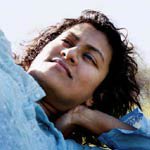Biotechnology & medicine
Xiaowei Zhuang
She has filmed a single influenza virus infecting a cell.
Global
Monisha Scott
Determined how small, natural proteins boost the immune response.

Global
Smruti Vidwans
Development of drugs to assist in the battle against TB.
Global
Shayn Peirce
Models how individual cells in tissues migrate, multiply, and develop during processes such as blood vessel growth. The models should aid tissue engineering and drug development.
Global
Frank Lyko
Aims to reprogram cancer cells to be more like normal cells by developing compounds that block the aberrant modification of DNA in cancer cells.
